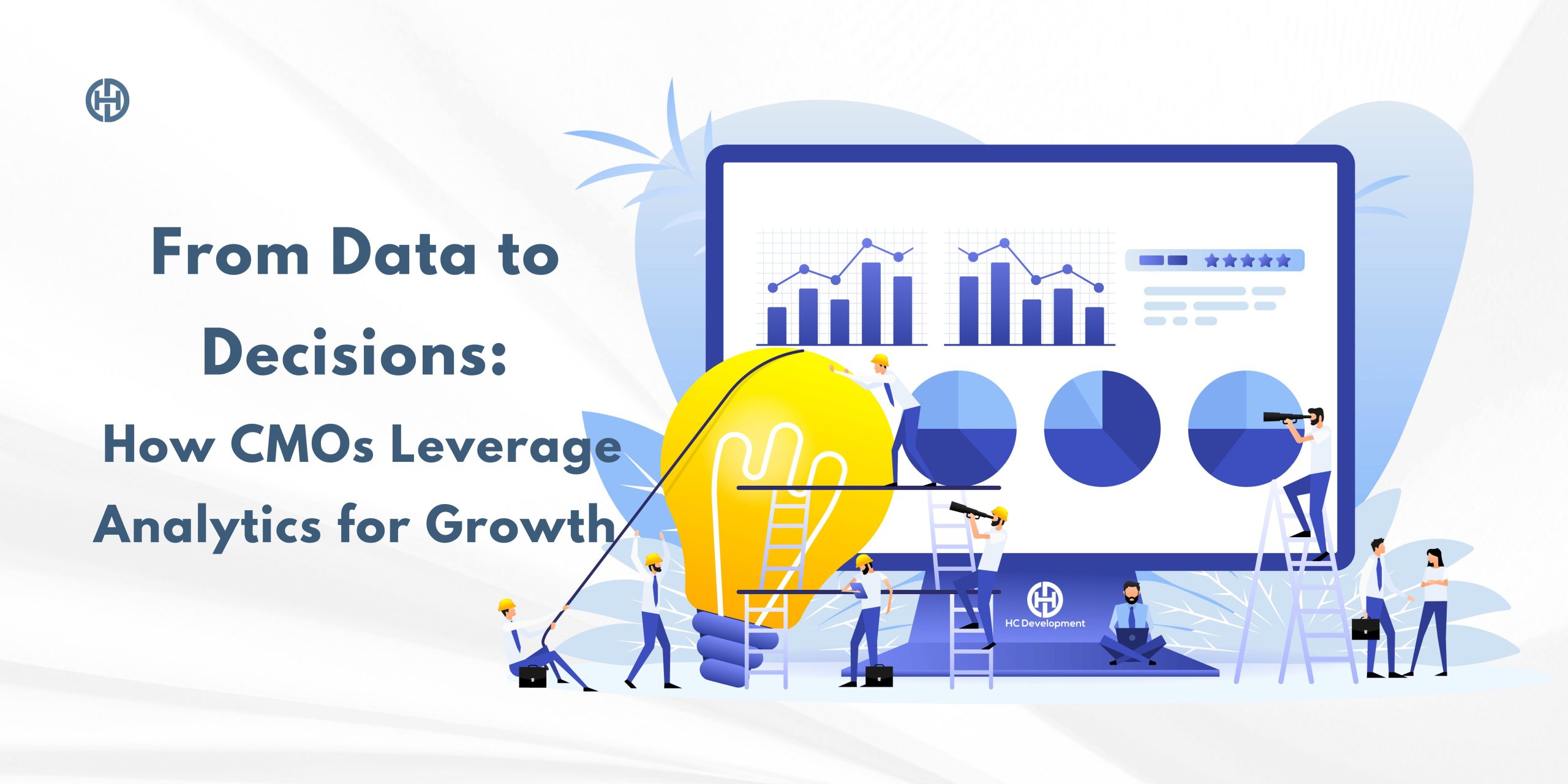From Data to Decisions: How CMOs Leverage Analytics for Growth
In today’s digital age, data is a powerful tool for businesses. For Chief Marketing Officers (CMOs), leveraging analytics can be the key to driving growth and making informed decisions. This blog post will explore how CMOs use data analytics to guide their strategies, enhance customer experiences, and achieve their goals. Written in an easy-to-understand manner, this article aims to make the complex world of data analytics accessible to everyone.
The Role of a CMO
The job of supervising a company’s marketing efforts falls to the Chief Marketing Officer (CMO). Their role includes developing marketing strategies, managing campaigns, and ensuring that the company’s brand message is effectively communicated to the target audience. In today’s data-driven world, CMOs rely heavily on analytics to inform their decisions and strategies.
Why Data Analytics is Important for CMOs
Data analytics involves analyzing raw data to draw meaningful insights. For CMOs, these insights are invaluable for understanding market trends, customer behavior, and the effectiveness of marketing campaigns. By leveraging analytics, CMOs can make data-driven decisions that lead to better outcomes and growth for their companies.
How CMOs Leverage Data Analytics
1. Understanding Customer Behavior
Why It Matters
It is essential to comprehend consumer behavior when developing marketing tactics. By analyzing data, CMOs can gain insights into customer preferences, buying patterns, and needs.
How It’s Done
Customer Segmentation:
Dividing customers into groups based on shared characteristics allows CMOs to tailor marketing efforts more effectively.
Behavioral Analysis:
Tracking how customers interact with the brand, such as website visits, social media engagement, and purchase history, provides valuable insights.
Customer Feedback:
Analyzing customer reviews and feedback helps CMOs understand what customers like and dislike about the brand.
2. Optimizing Marketing Campaigns
Why It Matters
Optimizing marketing campaigns ensures that resources are used efficiently and that the campaigns achieve the desired results.
How It’s Done
A/B Testing:
Comparing two versions of a marketing element (e.g., an email or ad) to see which performs better.
Performance Metrics:
Tracking key performance indicators (KPIs) such as conversion rates, click-through rates, and return on investment (ROI) helps CMOs assess the effectiveness of campaigns.
Real-Time Analytics:
Monitoring campaign performance in real-time allows CMOs to make adjustments on the fly.
3. Personalizing Customer Experiences
Why It Matters
Personalized interactions can greatly increase client loyalty and happiness.
How It’s Done
Personalized Content:
Delivering material that is relevant to specific clients through the use of data is known as personalized content.
Dynamic Pricing:
Dynamic pricing refers to modifying prices in response to consumer demand and market conditions.
Predictive Analytics:
Anticipating customer needs and preferences to offer personalized recommendations.
4. Enhancing Customer Retention
Why It Matters
It is frequently less expensive to keep current clients than to find new ones.
How It’s Done
Churn Analysis:
Identifying patterns that indicate when a customer is likely to stop using the product or service.
Loyalty Programs:
Using data to design programs that reward and retain loyal customers.
Customer Engagement:
Analyzing engagement data to understand how to keep customers interested and satisfied.
5. Driving Strategic Decisions
Why It Matters
Data-driven strategic decisions can lead to more effective and successful business outcomes.
How It’s Done
Market Research:
Analyzing market trends and competitor performance to inform strategic planning.
Forecasting:
Forecasting is the process of predicting future trends and results using past data.
Resource Allocation:
Determining the best use of resources based on data insights.
Challenges and Solutions in Leveraging Data Analytics
Common Challenges
Data Overload:
There is an overwhelming amount of data available.
Data quality:
It is essential to guarantee the dependability and correctness of data.
Skill Gaps:
Lack of expertise in data analysis can hinder effective use of data.
Solutions
Data Management Tools:
Utilizing tools that help organize and analyze data efficiently.
Data Cleaning:
Implementing processes to ensure data quality.
Training and Development:
Investing in training for staff to improve data analysis skills.
The Future of Data Analytics in Marketing
The role of data analytics in marketing is only expected to grow. With advancements in technology. CMOs will have even more tools at their disposal to leverage data for growth. Artificial intelligence (AI) and machine learning (ML) will play a significant role in automating data analysis and providing deeper insights.
Conclusion
Data analytics is a powerful tool for CMOs, enabling them to make informed decisions, optimize marketing efforts, and drive growth. By understanding and leveraging the power of data, CMOs can navigate the complexities of the modern market and achieve their business goals. Whether you are a student or a seasoned professional. Understanding the importance of data analytics in marketing is essential for success in today’s digital world.
To know more about Business Growth and Strategy Click Here
Subscribe : Youtube




